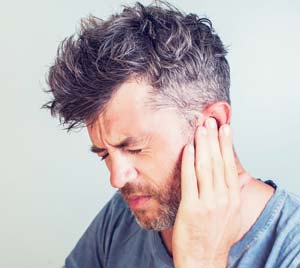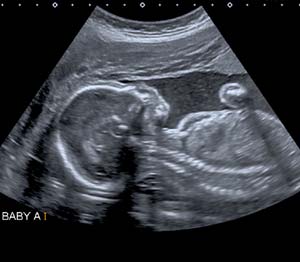Health and wellbeing at work
Read the CIPD report on trends in absence, and health and well-being in UK workplaces...
Read the CIPD report on trends in absence, and health and well-being in UK workplaces...
 Hearing loss is not the only harm caused by excessive noise
Hearing loss is not the only harm caused by excessive noiseWhile hearing loss is one potential impact of high noise levels, there are a variety of other significant links between noise and wellbeing.
It’s well known that exposure to excessive amounts of noise can have an adverse impact on people’s hearing, potentially resulting in noise induced hearing loss (NIHL) and temporary threshold shift, sometimes referred to as auditory fatigue.
However, there are numerous less well known effects from noise. These may directly or indirectly impact our wellbeing in other ways, but are often not identified as possible forms of harm. Noise can exacerbate other health conditions, and some individuals are more sensitive to noise than others, and will therefore suffer harm more readily through exposure.
All of us have probably complained about an “annoying” noise at some point or another. Noise typically provokes this annoyance when it affects our communication or concentration, and this can also lead to other cognitive and emotional responses.

If there is a change in your auditory system, for example if you suffer from hearing loss or an ear infection, the amount of information being sent to the brain changes. The brain responds to this change in levels by trying to get more information from the ear, the extra ‘information’ you may experience comes as sounds we call tinnitus. Tinnitus is actually brain activity – and not the ear itself providing the ‘information’.
Common across all age groups, it’s estimated that 30% of people will experience tinnitus temporarily at some point in their lives, while 10% will live with a more persistent form of the condition. It can’t always be prevented and there are many causes and reasons why people experience tinnitus, including infections, stress and anxiety, and of course, loud noise.

The long-term negative effects of high blood pressure are well known and can result in:

This can be good when the loud noise is something that we need to be aware of, such as a car hooting at us to get out of the way, or a fire alarm going off: in these circumstances we need to be ready to act. But when that response is always turned on because you’re chronically exposed to noise, then the noise itself can be a chronic stressor.
Chronically high cortisol can result in:

Results showed that for the group of part-time and full-time workers, the adjusted hazard ratio (HR) for hearing dysfunction associated with maternal occupational noise exposure greater than 85 dB versus less than 75 dB was 1.27. For full-time workers as a group, the HR was 1.82.
This study shows how imperative it is for employers to control and reduce noise in the workplace. Even if pregnant women themselves use ear protectors in noisy environments, the babies they’re carrying remain unprotected.
Excessive levels of noise, or distracting noises, can also increase the likelihood of accidents by:
 What now?
What now?Loss of hearing can have a huge impact on an individual’s personal and work life – and once hearing is damaged, there’s currently no known cure or effective treatment.
Wellbeing impacts go well beyond loss of hearing from excessive noise levels: there are a number of other ways we can be harmed, some of which are interlinked. These other types of harm may also manifest themselves a lot sooner than noise induced hearing loss, or can even affect our unborn children.
Noise and wellbeing are inextricably linked. If you have high noise levels in your workplace, you should do all you can to eliminate or reduce these at source. If that’s not possible, look to other means such as procedural controls, or as a last resort, hearing protection.

Contact our consultants for specialist knowledge and services
Read the CIPD report on trends in absence, and health and well-being in UK workplaces...
Read the CIPD report on trends in absence, and health and well-being in UK workplaces...
Workplace stress awareness, the impact of technology, and what you can do to manage the risks...
Workplace stress awareness, the impact of technology, and what you can do to manage the risks...
Learn more about ototoxic substances, and what you can do to manage risks...
Learn more about ototoxic substances, and what you can do to manage risks...